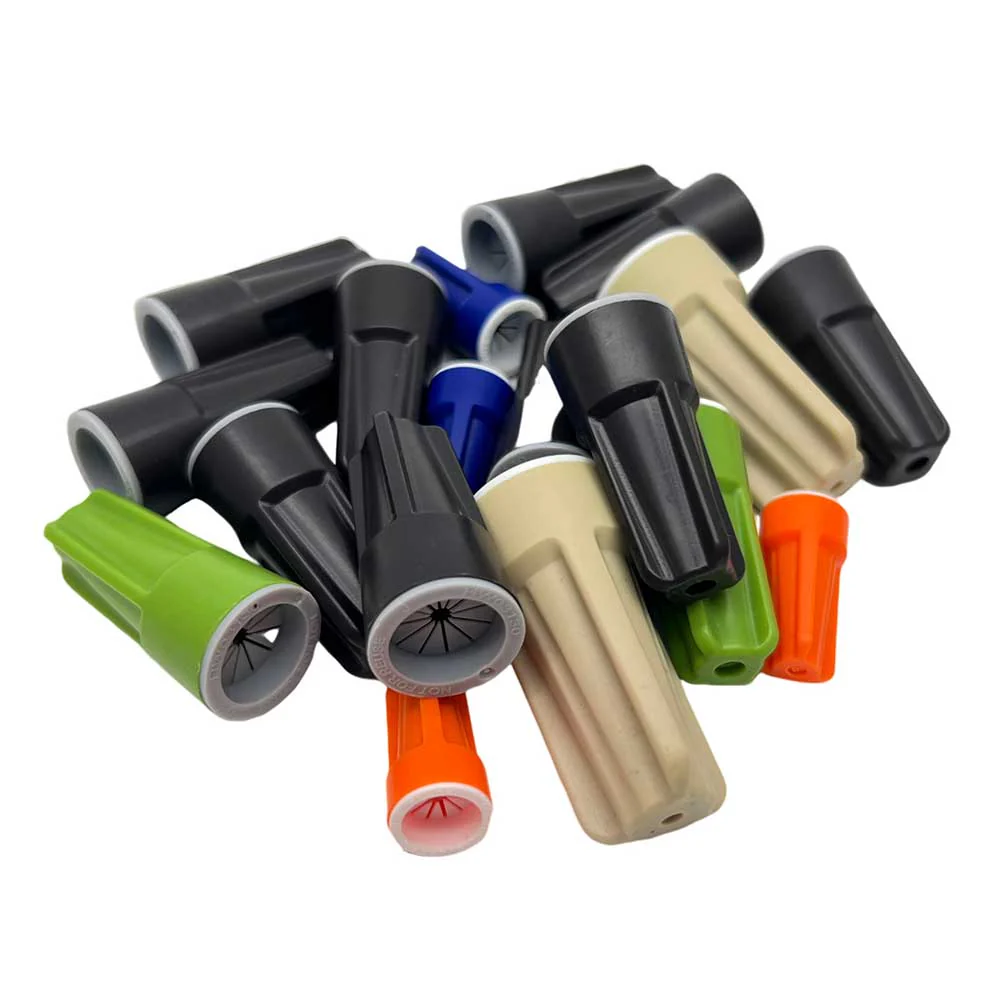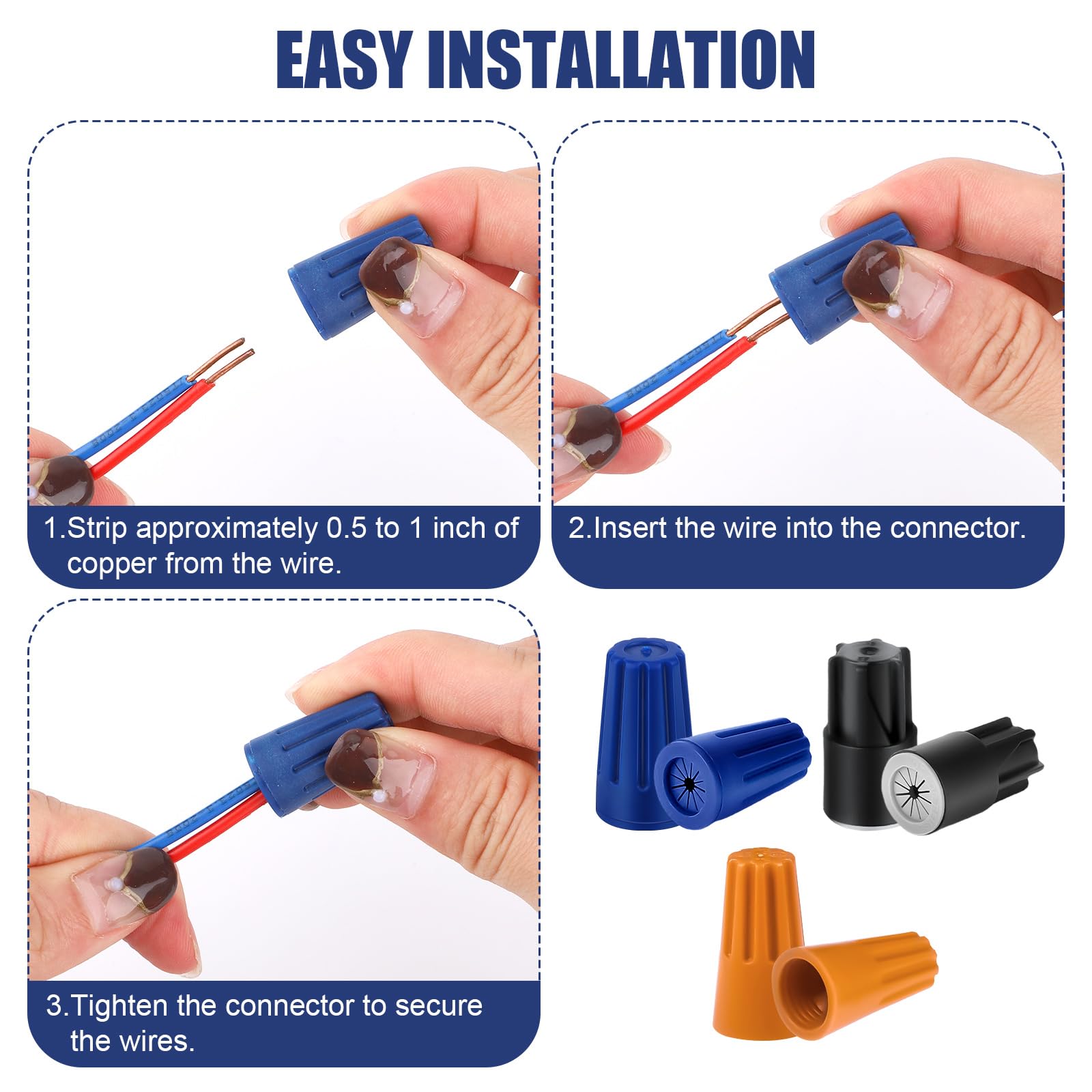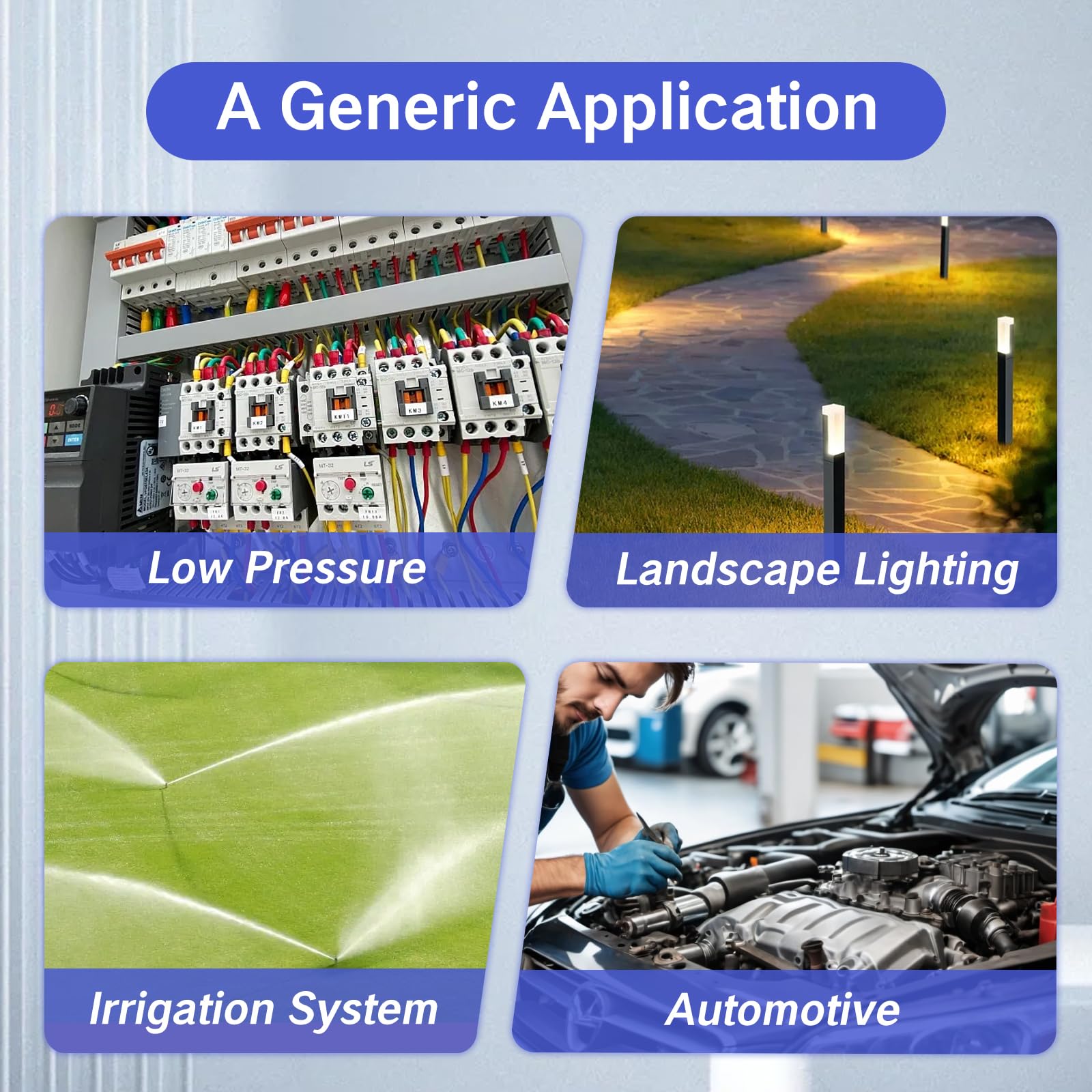Waterproof wire nuts require specific installation techniques, proper sealing materials, and compliance with electrical codes to prevent dangerous moisture infiltration that can cause electrical fires, shock hazards, and system failures in residential projects. Understanding these precautions is critical for any homeowner working with outdoor electrical connections, basement wiring, or areas prone to moisture exposure.
What Are Waterproof Wire Nuts?

Waterproof wire nuts are specialized electrical connectors designed to create moisture-resistant joints in residential wiring systems. Unlike standard wire nuts, these connectors feature integrated sealing mechanisms, silicone-filled chambers, or rubber gaskets that prevent water infiltration while maintaining secure electrical connections.
Key Components:
- Sealed housing: Prevents moisture entry through threaded or snap-on designs
- Dielectric gel or silicone: Fills internal spaces to displace air and moisture
- Corrosion-resistant materials: Typically use plastic, ceramic, or treated metal components
- Enhanced threading: Provides superior grip and sealing compared to standard nuts
Critical Safety Precautions for Waterproof Wire Nuts
⚠️ SAFETY WARNING: Electrical work in wet conditions requires immediate power shutoff and professional consultation for complex installations.
Primary Installation Precautions
Before Installation:
- Turn off power at the circuit breaker – never work on live circuits
- Test circuits with a non-contact voltage tester to confirm power is off
- Check local codes – many jurisdictions require GFCI protection for outdoor connections
- Verify wire compatibility – ensure wire gauge matches connector specifications
- Inspect existing wiring for damage, corrosion, or inadequate insulation
During Installation:

- Strip wire correctly – remove exactly the amount of insulation specified by manufacturer
- Twist wires properly – make at least 3-4 complete turns for solid connection
- Apply sealing compound evenly if required by connector type
- Thread connector firmly but avoid over-tightening that could damage seals
- Test connection by gently tugging wires to ensure secure attachment
Comprehensive Comparison: Waterproof Wire Nut Types
| Connector Type | Best Use | Water Rating | Installation Complexity | Cost Range |
|---|---|---|---|---|
| Silicone-Filled Nuts | Underground/burial | IP68 submersible | Moderate | $2-5 each |
| Gel-Filled Connectors | Outdoor junction boxes | IP67 weatherproof | Easy | $1-3 each |
| Heat-Shrink with Adhesive | Direct burial splices | IP68 submersible | Complex | $3-8 each |
| Threaded Waterproof Nuts | Above-ground outdoor | IP65 splash-proof | Easy | $1-4 each |
| Compression Seal Connectors | Pool/spa applications | IP68 submersible | Moderate | $5-15 each |
Essential Applications and Use Cases
Outdoor Residential Applications

1. Landscape Lighting Systems
- Use silicone-filled connectors for in-ground connections
- Install inside waterproof junction boxes rated for outdoor use
- Ensure all connections are at least 6 inches above grade level
2. Pool and Spa Wiring
- Require specialized compression seal connectors rated for wet locations
- Must comply with NEC Article 680 for swimming pool installations
- Professional installation typically required due to safety regulations
3. Outdoor Outlet and Light Fixture Connections
- Use GFCI-protected circuits with waterproof connectors in weather-tight boxes
- Position junction boxes to prevent water accumulation
- Apply dielectric grease to threaded connections for added protection
Indoor High-Moisture Areas
1. Basement and Crawl Space Wiring
- Use gel-filled connectors in areas with high humidity
- Ensure proper ventilation to reduce moisture buildup
- Install dehumidification systems when necessary
2. Bathroom and Kitchen Applications
- Follow NEC requirements for wet location installations
- Use GFCI protection for all outlets within 6 feet of water sources
- Install waterproof connectors only in appropriate junction boxes
Step-by-Step Installation Process
Step 1: Power Shutdown and Safety Verification
Turn off power at the main breaker and use a non-contact voltage tester to verify circuits are de-energized. Never skip this critical safety step.
Step 2: Wire Preparation
Strip wire insulation according to manufacturer specifications (typically 3/4 inch for most residential applications). Clean copper conductors with wire brush if corrosion is present.
Step 3: Connection Assembly
Twist wire ends together with at least 3 complete turns. For stranded wire, twist individual strands tight before joining to solid conductors.
Step 4: Connector Installation
Thread waterproof wire nut clockwise until finger-tight, then add 1/4 turn with appropriate tool. Do not over-tighten as this can damage internal sealing components.
Step 5: Sealing Verification
Inspect connector for proper sealing – no gaps should be visible around threading or wire entry points. Apply additional sealant if specified by manufacturer.
Step 6: Junction Box Installation
Place completed connections inside appropriate waterproof junction boxes with gasket seals. Ensure box is rated for intended environment (wet, damp, or dry locations).
Code Compliance and Professional Requirements
National Electrical Code (NEC) Requirements
Article 110.14: All electrical connections must be suitable for the conditions of use, including moisture exposure levels.
Article 314: Junction boxes in wet locations must be weatherproof and positioned to prevent water accumulation.
Article 406: Outdoor receptacles require GFCI protection and weatherproof covers when not in use.
Professional Installation Requirements
- Permit requirements: Most jurisdictions require permits for new outdoor electrical installations
- Inspection needs: Final electrical inspection typically required for outdoor circuits
- Liability considerations: Improper installation can void homeowner’s insurance coverage
Common Installation Mistakes and Troubleshooting
Frequent Errors to Avoid
1. Inadequate Wire Stripping
- Problem: Too little exposed copper prevents proper connection
- Solution: Follow manufacturer’s stripping length specifications exactly
- Prevention: Use quality wire strippers calibrated for wire gauge
2. Over-tightening Connectors
- Problem: Damaged seals allow moisture infiltration
- Solution: Replace damaged connectors and follow torque specifications
- Prevention: Use appropriate tools and follow manufacturer guidelines
3. Wrong Connector Type Selection
- Problem: Standard wire nuts used in wet locations
- Solution: Replace with properly rated waterproof connectors
- Prevention: Understand environment classifications (wet, damp, dry locations)
Troubleshooting Connection Problems
| Symptom | Likely Cause | Solution | Prevention |
|---|---|---|---|
| Intermittent power loss | Loose connection | Re-terminate with proper torque | Follow installation procedures |
| Corrosion visible | Moisture infiltration | Replace connector and improve sealing | Use higher IP-rated connectors |
| GFCI tripping | Ground fault from moisture | Locate and seal moisture entry point | Regular inspection schedule |
| Overheating connectors | Overloaded circuit or poor connection | Check load calculations and re-terminate | Proper wire gauge selection |
Selection Criteria for Residential Projects
Environmental Assessment Questions
Moisture Exposure Level:
- Will connections be submerged or just exposed to rain?
- Is area subject to flooding or standing water?
- What is typical humidity level in installation location?
Temperature Considerations:
- What are seasonal temperature extremes?
- Will connections experience freeze-thaw cycles?
- Are connections near heat sources that could affect sealing materials?
Accessibility Requirements:
- Can connections be easily inspected and maintained?
- Are connections in areas requiring special tools for access?
- What is realistic inspection and maintenance schedule?
Expert Tips for Long-Term Reliability
🔧 Professional Recommendations
Tip 1: Use Dielectric Grease Sparingly
Apply thin layer of dielectric grease to threaded connections, but avoid excess that can attract debris and compromise sealing.
Tip 2: Install Drip Loops
Position wiring to create natural drip points that direct water away from connection points.
Tip 3: Plan for Thermal Expansion
Allow slight slack in wiring to accommodate expansion and contraction without stressing connections.
Tip 4: Document Installation Details
Keep records of connector types, installation dates, and inspection schedules for maintenance planning.
Tip 5: Establish Inspection Schedule
Inspect outdoor electrical connections annually, and after severe weather events.
When to Call a Professional
Situations Requiring Licensed Electrician
Immediate Professional Help Needed:
- Any work involving main electrical panel modifications
- Installation of new circuits requiring permits
- Pool, spa, or hot tub electrical connections
- Upgrade work involving service capacity increases
- Troubleshooting persistent GFCI tripping or electrical faults
Code Compliance Situations:
- Local jurisdiction requires professional installation
- Insurance company requirements for outdoor electrical work
- HOA restrictions on DIY electrical modifications
- Work involving structures requiring engineering approval
Quick Reference Installation Checklist
Pre-Installation Safety Check
- ☐ Power confirmed off with voltage tester
- ☐ Proper tools and materials assembled
- ☐ Local codes and permit requirements verified
- ☐ Weather conditions suitable for installation
- ☐ Emergency contact information readily available
Installation Quality Check
- ☐ Wire gauge matches connector specifications
- ☐ Stripping length meets manufacturer requirements
- ☐ Connections mechanically secure before applying power
- ☐ All sealing materials properly applied
- ☐ Junction boxes appropriate for environment
- ☐ GFCI protection installed where required
Post-Installation Verification
- ☐ Visual inspection shows no obvious defects
- ☐ Connections tested for mechanical security
- ☐ Power restored gradually with monitoring
- ☐ GFCI devices tested for proper operation
- ☐ Documentation completed for future reference
Frequently Asked Questions
Q: Can I use regular wire nuts with electrical tape for outdoor connections?
A: No, standard wire nuts with tape do not provide adequate moisture protection for outdoor applications. Use properly rated waterproof connectors designed for wet locations to ensure safety and code compliance.
Q: How often should I inspect waterproof wire nut connections?
A: Inspect outdoor electrical connections annually and after severe weather events. Indoor connections in high-moisture areas should be checked during routine home maintenance, typically every 2-3 years.
Q: What’s the difference between weatherproof and waterproof electrical connectors?
A: Weatherproof connectors (typically IP65 rated) resist rain and splash but may not withstand submersion. Waterproof connectors (IP67 or IP68 rated) can handle temporary or permanent submersion respectively.
Q: Do waterproof wire nuts require GFCI protection?
A: GFCI protection requirements depend on location and application, not the connector type. Outdoor receptacles, bathroom circuits, and areas within 6 feet of water sources typically require GFCI protection regardless of connector type used.
Q: Can I install waterproof wire nuts underground without a junction box?
A: Some waterproof connectors are rated for direct burial, but local codes may still require accessible junction boxes. Check NEC Article 314 and local requirements before burying any electrical connections.
Q: What should I do if I find moisture inside a waterproof connector?
A: Turn off power immediately and replace the connector. Investigate the cause of moisture infiltration – damaged sealing, improper installation, or inadequate connector rating for the environment.
Q: How do I know if my waterproof wire nuts are installed correctly?
A: Properly installed waterproof connectors show no visible gaps around sealing surfaces, wires cannot be pulled loose with gentle tugging, and connections remain dry during inspection after weather exposure.
Q: Are expensive waterproof connectors always better than cheaper ones?
A: Higher-quality connectors typically offer better sealing, longer service life, and superior materials, but the most important factor is selecting connectors with appropriate ratings for your specific application and environment.
Professional Installation Recommendation: While homeowners can handle basic waterproof wire nut installations, complex outdoor electrical projects benefit from professional installation to ensure code compliance, safety, and long-term reliability. Always consult local electrical codes and consider hiring licensed electricians for critical safety applications.

